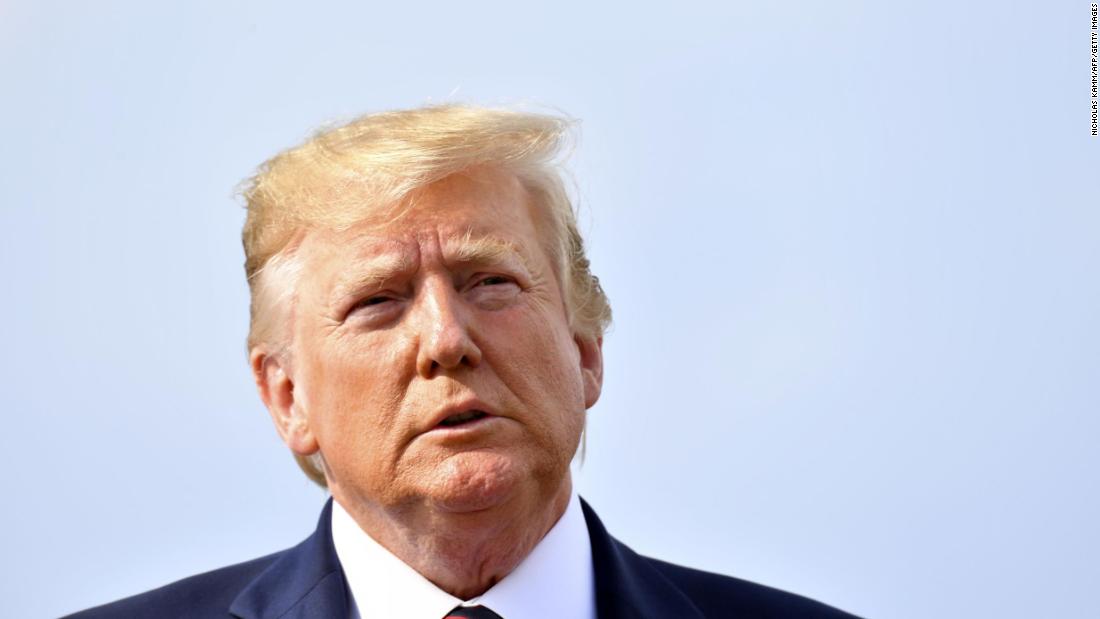Trump also lobbed the “nasty” epithet earlier in an interview with the British tabloid, The Sun, in which he was asked about comments the Duchess of Sussex, Meghan Markle, had made in 2016 to TV host Larry Wilmore, calling Trump “misogynistic.” “I didn’t know that she was nasty,” Trump said. “I hope she is OK.”
We are, by now, used to the President’s name-calling — it is unpresidential and gauche.
But “nasty” is one that rings out with some significance: He seems to reserve it for women. Recall Trump infamously interrupting Hillary Clinton during the last debate of his 2016 presidential campaign
to call her “a nasty woman,” a remark so obviously gendered that many women responded by trying to reclaim it. One
website that began selling “Nasty Woman” T-shirts reported that its design went viral overnight, generating tens of thousands of orders.
That Trump chose to hurl
the same insult at Markle, while trying to defend himself against
her 2016 claim that he is misogynistic, is ironic. That he jabbed at Pelosi in the same way, even after taking criticism over the Markle jab, is telling. That he did again with the Danish Prime Minister … well we have a pattern here.
It would be nice to be able to ignore this sophomoric behavior at this point in this presidency. But it’s critical that we never become numb to it. To do so would be to ignore the consequences it can carry for women. A misogynist can’t be expected to acknowledge discrimination and abuse, much less fight for leaders and legislation that would protect women from it. And the country must demand better.
Indeed, after decades of feminist gains, the belief that women exist to cater to men’s egos and desires was — we had reason to believe — on its way out, until Trump revived it. Now, Trump signals too often through word and action that it is acceptable. Consider, for example, that
several of Trump’s
advisers and
appointees have been accused of enabling abuse toward women or misogyny.
And the President’s choice (since withdrawn) for the Federal Reserve Board,
Stephen Moore, has been arguing against gender parity for 25 years (he responded to some of the criticism he’s drawn for it by saying he was joking).
Of course, Trump has long
defended his often-troubling history with women by pointing to all the senior women he has surrounded himself with in his company and administration. That’s a fair point, but it only proves that he isn’t a sexist. He is, however, a misogynist. There’s a difference.
Cornell University philosophy professor Kate Manne
explains in her 2018 book, “Down Girl: The Logic of Misogyny,” that “sexism taken alone involves believing in men’s superiority to women in masculine-coded, high-prestige domains (such as intellectual endeavors, sports, business, and politics), and the naturalness or even inevitability of men’s dominance therein.”
Trump has hired a number of women in very senior positions. These include White House counselor
Kellyanne Conway, the first woman ever to lead a winning presidential campaign by a major party; his daughter Ivanka Trump, a key adviser; and Gina Haspel, head of the CIA.
And there is
Barbara Res, who worked at the Trump Organization for more than 10 years in roles including senior vice president; and
Louise Sunshine, who
worked for Trump at the Trump Organization for 15 years and later became executive vice president of the organization.
Powerful women given serious authority — he’s shown he’s not a sexist.
But the misogyny is another story, as Markle discerned. Manne argues that misogyny involves punishing women who don’t act the way men want them to. This is exactly what Trump does, and he does it publicly. He called Pelosi,
Markle and Clinton “nasty.” He called one-time aide Omarosa Manigault “that dog” after she wrote unflatteringly about him. He said then Fox News anchor Megyn Kelly had “
blood coming out of her wherever” after she asked him tough questions at a debate. He said Mika Brzezinski was “
bleeding badly from a facelift” after she criticized him.
He called Rosie O’Donnell a “
pig.” There are many more instances — too many to recount here — of Trump’s personal attacks on women who challenged him, mainly aimed at appearance and intelligence. (US Sen. Kirsten Gillibrand is a “lightweight;” Arianna Huffington and Bette Midler are “unattractive;” and Stephanie Clifford is a “horseface.”)
Of course, such gendered insults would rarely, if ever, be applied to men. Manne wrote one way to identify misogyny is to contemplate whether men in comparable positions would get the same treatment. Many people mistakenly think misogyny involves hating all women, but “misogynists can love their mothers,” wrote Manne. “Not to mention their sisters, daughters, wives, girlfriends, and secretaries …They need not hate women universally, or even very generally. They tend to hate women who are outspoken, among other things.”
Since we are accustomed to Trump’s beyond-the-pale statements, why does the way the President speaks
about
Mette Frederiksen, Nancy Pelosi, Meghan Markle, Hillary Clinton or “wacky” US Sen. Jacky Rosen matter?
Simply, because he’s the most-high profile person in America. His comments set the tone for our national discourse and for the way others — including ordinary citizens and the federal government — treat women in every realm of life.
As we approach the 2020 race, women and those who care about them need to think about whether it is in their interest — and the interest of their daughters (and sons) — to keep an inveterate misogynist in the White House as America leans into its future.
This op-ed was updated to reflect the President’s comments about Nancy Pelosi, and has been updated again to reflect his comments about Mette Frederiksen.



